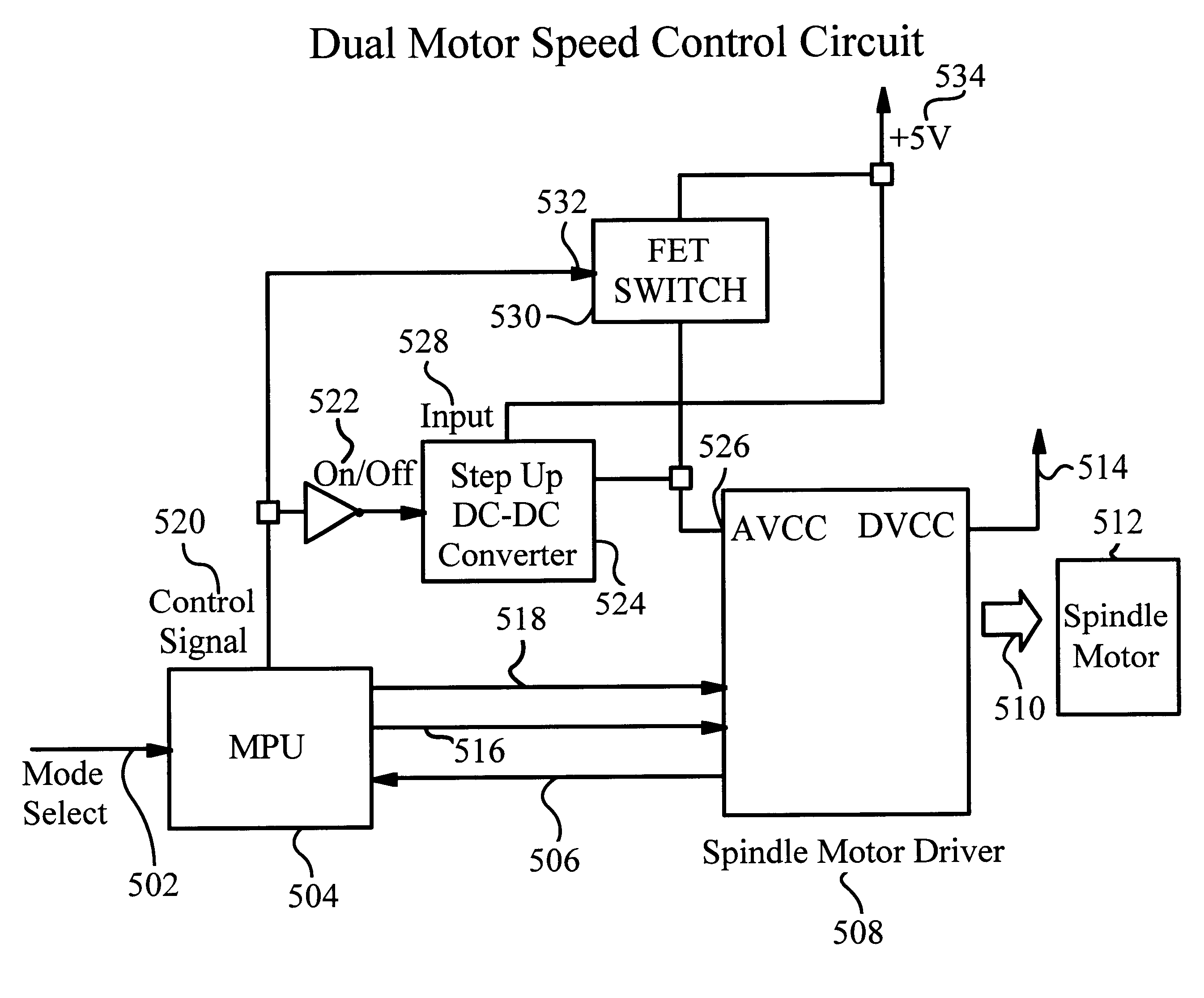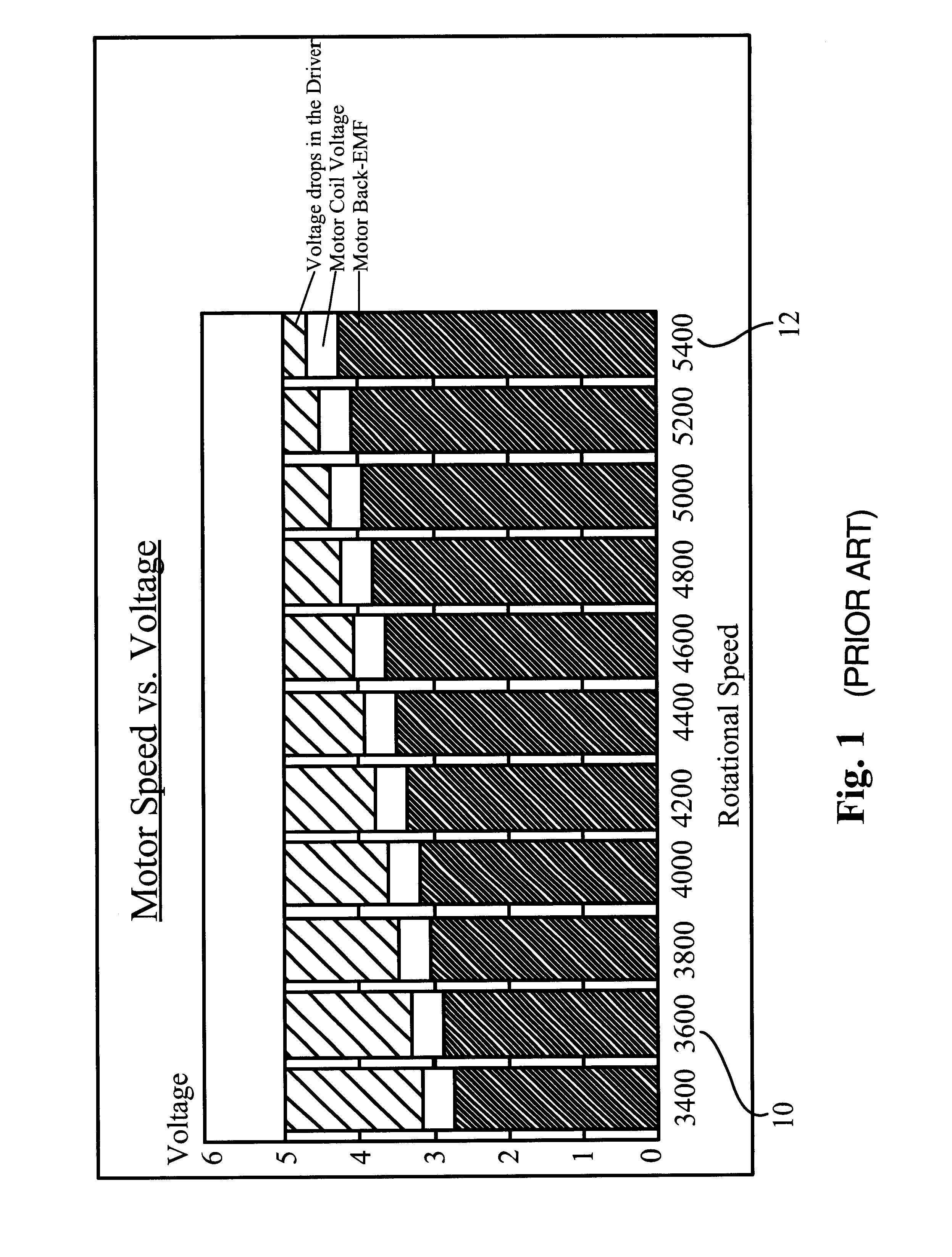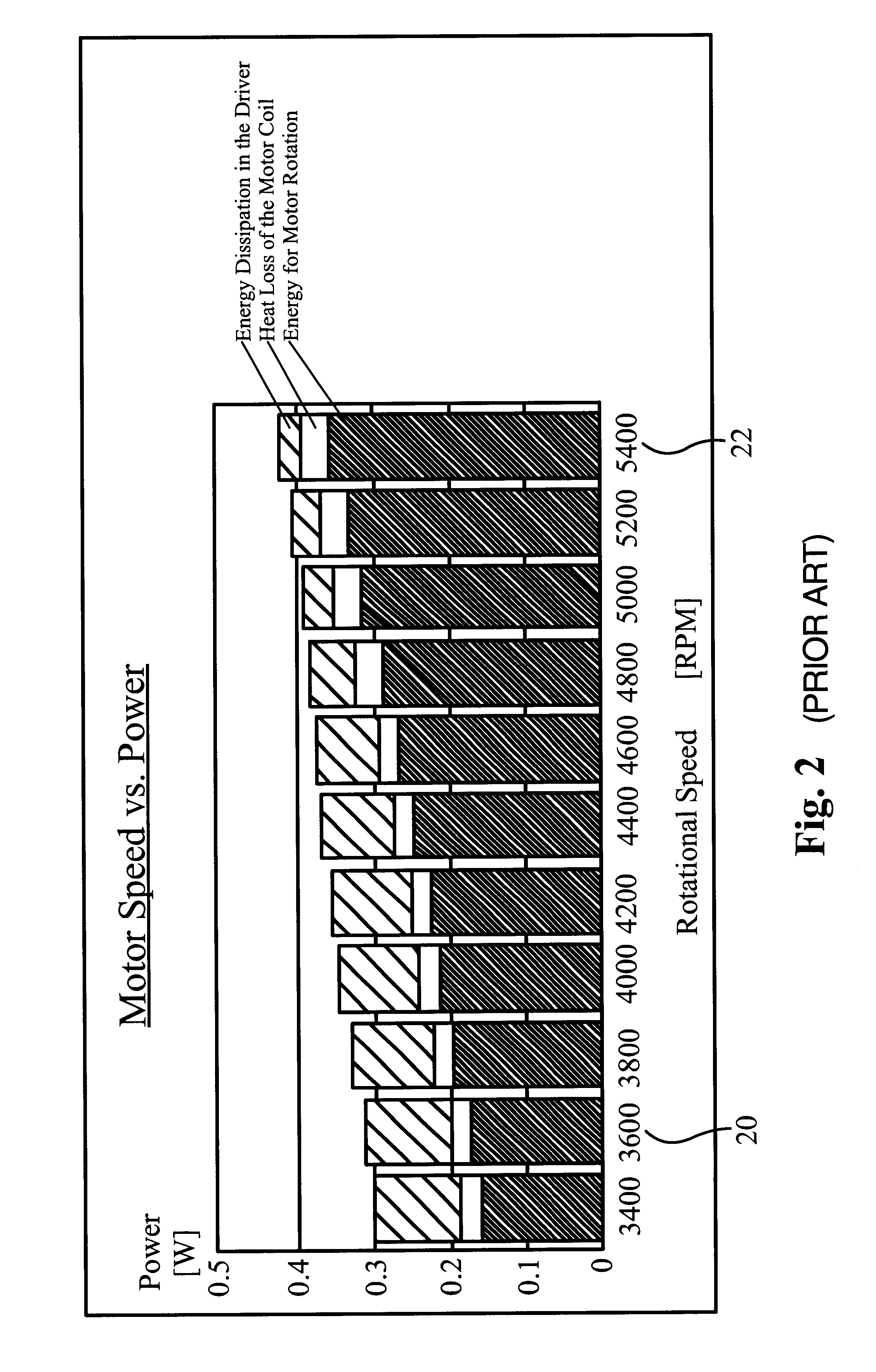Dual speed motor drive circuit
- Summary
- Abstract
- Description
- Claims
- Application Information
AI Technical Summary
Problems solved by technology
Method used
Image
Examples
Embodiment Construction
Although the invention is described as embodied in a hard disk drive with a spindle motor, the invention also applies to other motor systems and applications requiring dual / multiple speed controls such as CD-ROM drives, DVD drives, floppy disk drives, and even video camcorders for example. Accordingly, the following preferred embodiment of the invention is set forth without any loss of generality to, and without imposing limitations upon, the claimed invention.
The present invention uses a spindle motor optimized to operated at the maximum efficiency with the full +5.0 V supply voltage for low RPM operation, and uses a voltage conversion circuitry to increase the standard +5.0 V supply voltage for higher RPM operation. Although the use of voltage conversion circuitry introduces some efficiency losses, unlike in the low RPM mode, this efficiency loss in the high RPM mode is insignificant as unlimited AC power is available.
Therefore, the use of a DC--DC step up converter not only allow...
PUM
 Login to view more
Login to view more Abstract
Description
Claims
Application Information
 Login to view more
Login to view more - R&D Engineer
- R&D Manager
- IP Professional
- Industry Leading Data Capabilities
- Powerful AI technology
- Patent DNA Extraction
Browse by: Latest US Patents, China's latest patents, Technical Efficacy Thesaurus, Application Domain, Technology Topic.
© 2024 PatSnap. All rights reserved.Legal|Privacy policy|Modern Slavery Act Transparency Statement|Sitemap



